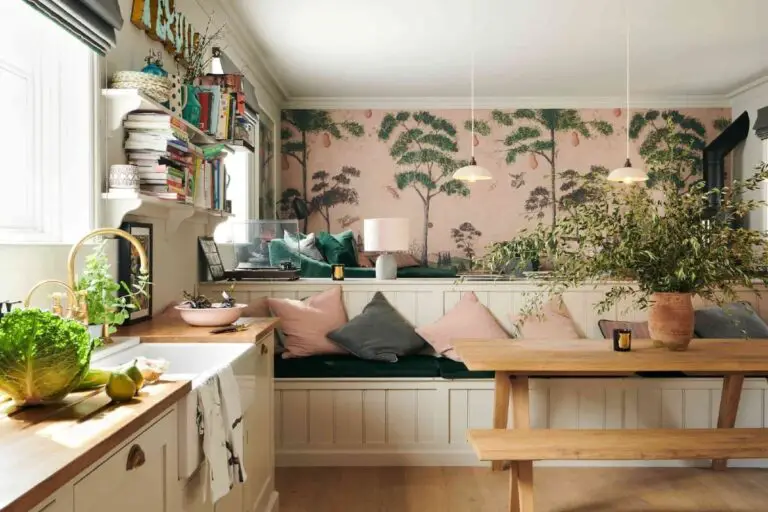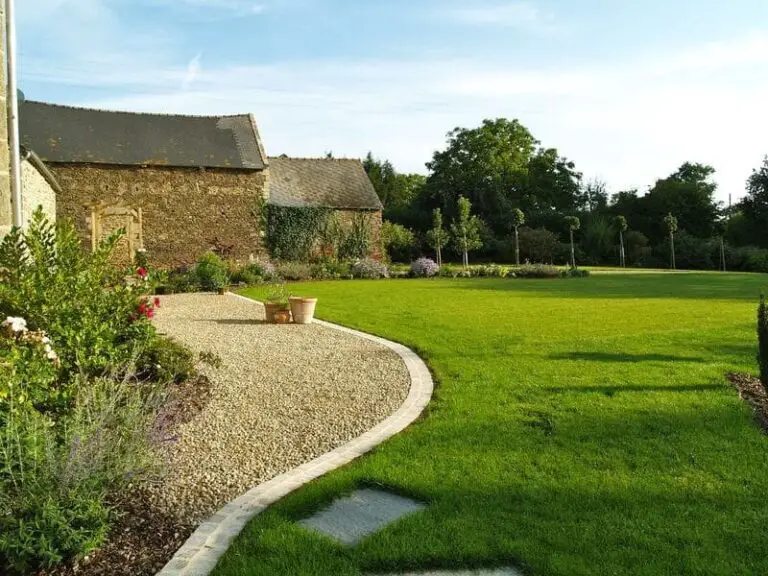15+ Rustic Farmhouse Table Ideas: Diy Tutorials For A Cozy Home In 2024
If you’re looking to add warmth and personality to your dining space, a rustic farmhouse table is an excellent choice. These iconic pieces of furniture are more than just a place to share meals; they hold stories, heritage, and a sense of belonging within the fabric of your home. In this article, we’ll delve into the world of rustic farmhouse tables, exploring their essence, characteristics, historical context, and design inspirations.
From understanding the style’s evolution to selecting the perfect table for your space, we’ll cover everything you need to know to navigate this timeless trend. Whether you’re looking to transform a traditional dining area or add a touch of country charm to a modern space, we’ll provide you with 15+ rustic DIY farmhouse table ideas that will inspire you to create a cozy and inviting atmosphere that reflects both tradition and your personal taste.
The Essence of Rustic Farmhouse Tables
Definition and Characteristics
A rustic farmhouse table transcends its status as mere furniture, embodying the essence of warmth and togetherness that defines family gatherings. Its enduring appeal lies in its rugged build and worn appearance, evoking a sense of nostalgia and character that modern pieces often struggle to replicate.
The defining characteristics of these tables include rich natural wood finishes, a sturdy structure, and occasionally, visible joinery that proudly showcases the craftsmanship that goes into each piece. This type of furniture prioritizes simplicity and practicality, serving as the very heartbeat of a home where meals are shared, memories are forged, and moments are cherished.
Historical Context and Evolution
The concept of the farmhouse table dates back to a time when homes were nestled among farmlands, and life was marked by simplicity. The earliest iterations of these tables were crafted from locally sourced wood, reflecting the practicality and resourcefulness of the era. As societal trends evolved and design aesthetics shifted over time, the farmhouse table underwent transformations in terms of style and appearance.
Nonetheless, its fundamental essence – as a hub for family gatherings and social bonding – remained unchanged. Today, while we may not reside in traditional farmhouses, our affinity for simplicity, natural beauty, and historical charm continues to fuel the enduring popularity of this iconic table design.
Materials Commonly Used
The rustic farmhouse table’s character is deeply rooted in the choice of material. While there are several options available, each with its own distinct features and benefits, some materials stand out for their natural beauty, durability, and ability to age gracefully over time. When it comes to selecting a material for your farmhouse table, you’re not just choosing a surface – you’re creating a unique atmosphere that reflects your personal style.
Reclaimed wood, for instance, offers an eco-friendly option with a one-of-a-kind patina that adds history and character to the table. The soft, easily distressed look of pine provides a lighter, more casual feel, while the durable, attractive grain of oak offers a timeless, sturdy option that exudes classic charm.
Ultimately, the material you choose will depend on your personal preferences and the style you’re aiming for – whether it’s the rich history of reclaimed wood, the soft warmth of pine, or the classic strength of oak. Each material brings its own set of qualities to the table, ensuring that your farmhouse table is a reflection of your individual taste.
Design Inspirations and Ideas
Classic Farmhouse Tables
Classic farmhouse tables bring a sense of timelessness and coziness to any dining space. Their distinctive features include large, solid construction and a natural wood appearance that exudes simplicity and durability. The sturdy legs and thick tabletop create a sense of solidity, while the natural finish highlights the wood’s unique grain pattern, adding warmth and authenticity to the room.
This versatility makes them an excellent choice for homes of any style, allowing families to gather and share meals in comfort.
Modern Rustic Tables
By fusing rustic elements with modern design, modern rustic tables successfully merge traditional coziness with contemporary sophistication. These innovative pieces typically feature streamlined silhouettes and incorporate unconventional materials like metals alongside wood, effectively blending the two styles. The outcome is a table that seamlessly integrates into a modern home while retaining its rustic charm, exuding warmth and invitingly.
This harmonious blend of elements is characterized by clean lines, simplistic design, preservation of natural textures, and thoughtfully mixed materials – often featuring metallic or glass accents to add an extra layer of depth. The judicious use of wood ensures the table retains its organic warmth, while a minimalist approach allows the piece’s quality craftsmanship to take center stage.
DIY Projects
For those who crave a unique and personalized touch, DIY projects offer an exciting opportunity to create a farmhouse table that perfectly fits their space and style. Ranging from simple modifications of existing furniture to building a table from scratch, these projects cater to various skill levels. Step-by-step guides provide valuable insights into choosing the right materials, tools needed, and customization tips to make the project accessible even to beginners.
By breaking down the process into manageable tasks, such as material selection, planning, and construction, DIY enthusiasts can bring their vision to life, tailoring the table’s design to meet specific needs and preferences. The end result is a functional piece of furniture that reflects one’s personality and adds a personal touch to any room.
Unique Features
To elevate your farmhouse table’s charm, consider incorporating distinctive characteristics that mirror your unique personality. This can be achieved by introducing distressed finishes that evoke an aged look, intricate leg designs that add a touch of sophistication, or extendable options that provide versatility. Each feature not only enhances the table’s functionality but also injects it with character and storytelling, transforming it into a true focal point in your home.
The benefits of these unique features are multifaceted: distressed finishes bring an air of nostalgia, intricate leg designs add visual interest, and extendable options ensure adaptability. By incorporating one or more of these design elements, you can curate a rustic farmhouse table that not only serves its purpose but also radiates warmth and history.
Ultimately, the key to creating a truly special piece lies in choosing features that resonate with your personal style and create an inviting atmosphere in your dining space.
Choosing the Right Table for Your Space
Size and Seating Capacity
When selecting a table, it’s essential to consider the size and seating capacity in relation to your dining area’s functionality and comfort. To ensure a comfortable layout, measure your space carefully, leaving at least 3 feet of clearance from the table to any walls or adjacent furniture. This allows for adequate room around the table for chairs and people to move about freely.
The table’s dimensions, including its length and width, will directly impact how many individuals can be seated comfortably. A general guideline is to allocate approximately 24 inches of space per person for a pleasant dining experience. Additionally, consider the height of the table, as a standard height of 30 inches can contribute to a comfortable seating arrangement.
Material Selection
When choosing a material for your table, it’s essential to weigh the benefits against the drawbacks. Solid wood tables boast durability and an ability to withstand the test of time, but they may demand more upkeep to preserve their appearance. On the other hand, veneer tables can provide a wooden aesthetic at a lower cost and with increased mobility, although their lifespan might be shorter due to heightened sensitivity to heat and moisture.
Finish and Color
When it comes to finishing and coloring your table, the overall impact on the dining space is undeniable. The finish you choose should harmonize with the room’s theme, whether traditional or modern. A natural wood finish can add a touch of elegance to a rustic setting, while a painted or stained table can bring a pop of color to a modern space. Furthermore, the finish not only affects the table’s aesthetic but also its maintenance and durability.
Some finishes are more resistant to scratches and stains, making them an excellent choice for families with young children or those who use their table frequently. In selecting the perfect finish, consider the aspect that matters most: the use and preference of the table. Additionally, ensure the color complements the room’s decor, creating a cohesive look that ties everything together.
Styling Your Farmhouse Table
Centerpieces and Decor
Transforming your farmhouse table into an inviting space is as easy as creating a stunning tablescape. To achieve this look, start by incorporating natural elements like flowers, branches, or fruits to add a seasonal or year-round touch of freshness and life. For a cozy ambiance, consider adding candles or lanterns that will create a warm and welcoming glow. Vintage finds like old jars or bottles can also be used to bring a sense of nostalgia to the table.
The key is to strike a balance between the table’s rustic charm and decorative items that reflect your personal style.
Seating Options
Transforming your dining area into a warm and inviting space is all about mixing and matching different seating options. By combining chairs, benches, and stools in various styles and heights, you can create a unique atmosphere that encourages socializing and makes mealtime a joy. The key to success lies in balancing functionality with aesthetics, ensuring each piece complements the others while also catering to your guests’ needs.
Consider factors like comfort, space constraints, and table style when selecting seating options, and don’t be afraid to mix things up for a truly eclectic look.
Lighting
The ambiance around your farmhouse table can be transformed with the right lighting. Chandeliers and pendant lights suspended above the table not only provide illumination but also serve as a decorative centerpiece. When selecting lighting fixtures, consider the size of your table and ceiling to ensure a harmonious fit. Adjustable lighting options, such as dimmer switches, allow you to create the perfect atmosphere for any occasion – from bright breakfasts with family to intimate dinners.
The type of lighting you choose can significantly impact the ambiance, with chandeliers adding elegance and pendant lights providing focused illumination. Dimmer switches offer adjustable brightness, allowing you to customize the mood. As you style your farmhouse table, think of it as a canvas for your creativity.
Each element – from seasonal decorations to seating arrangements and lighting choices – contributes to creating a welcoming and personalized dining space that feels lived-in and loved. Ultimately, your goal should be to craft a space where meals become lasting memories.
15+ Rustic DIY Farmhouse Table Ideas
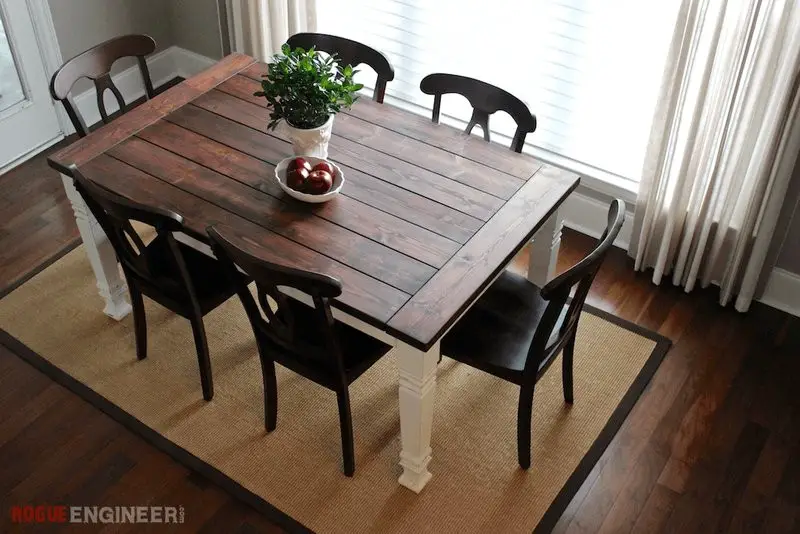
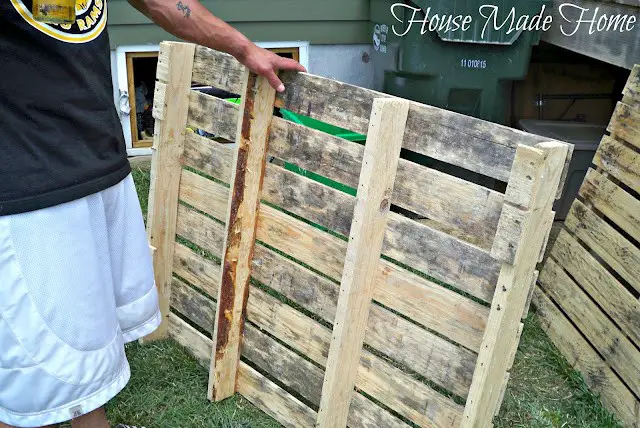
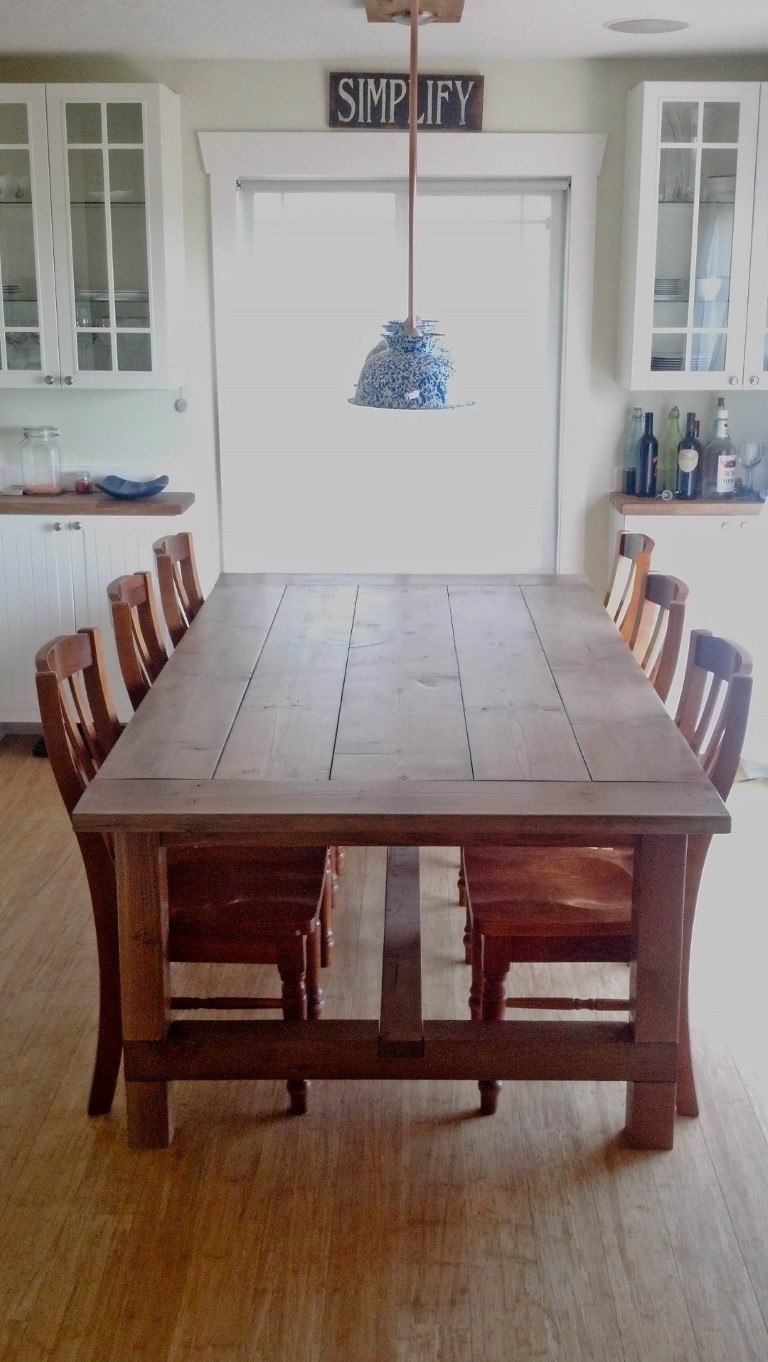
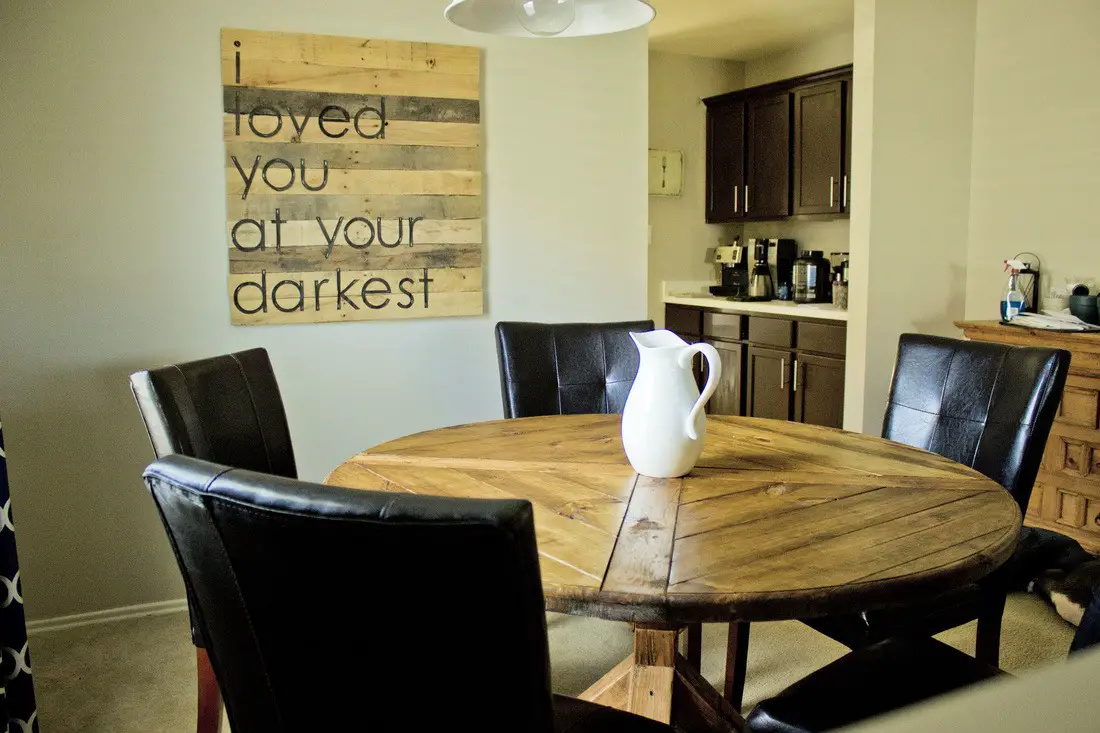
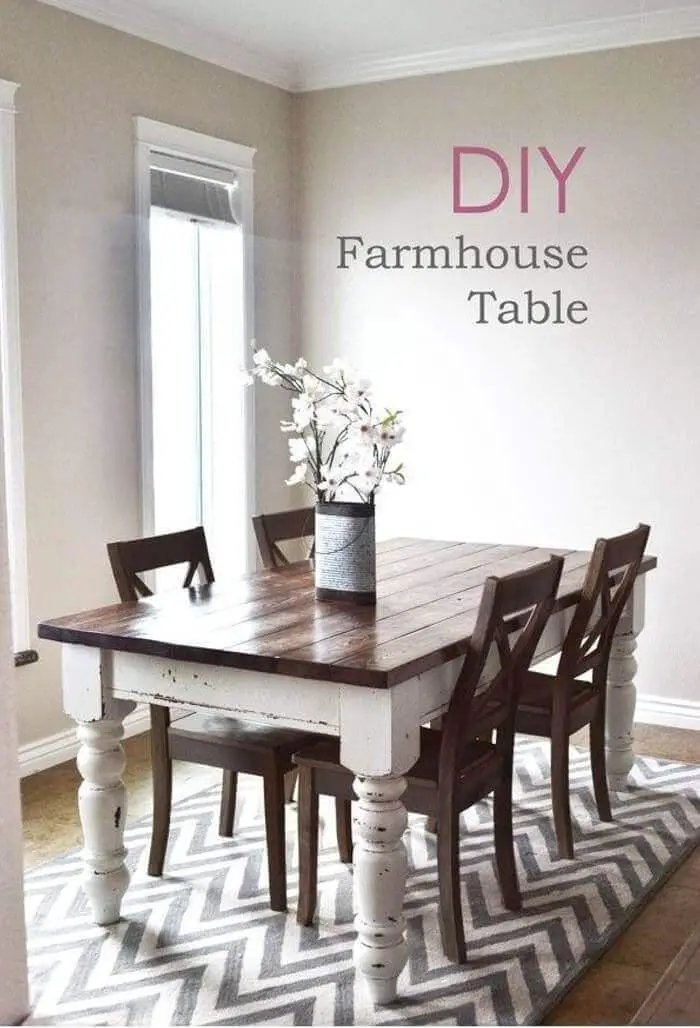
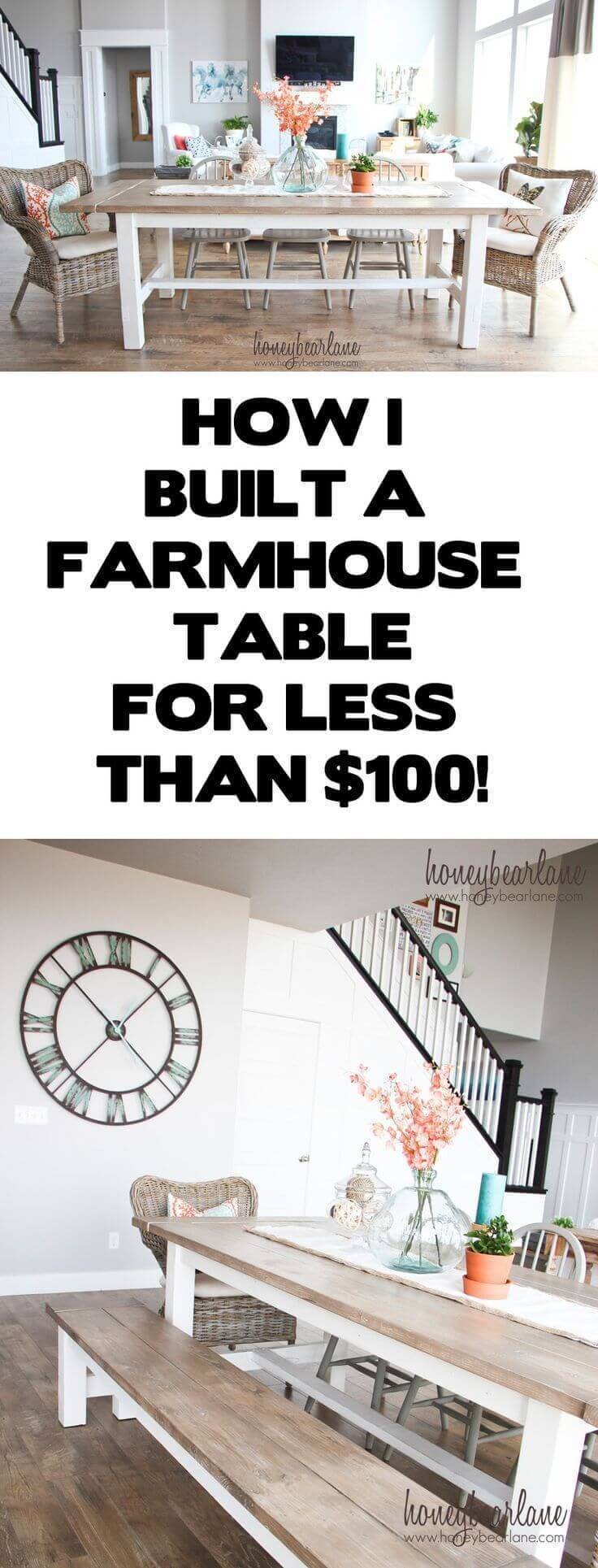
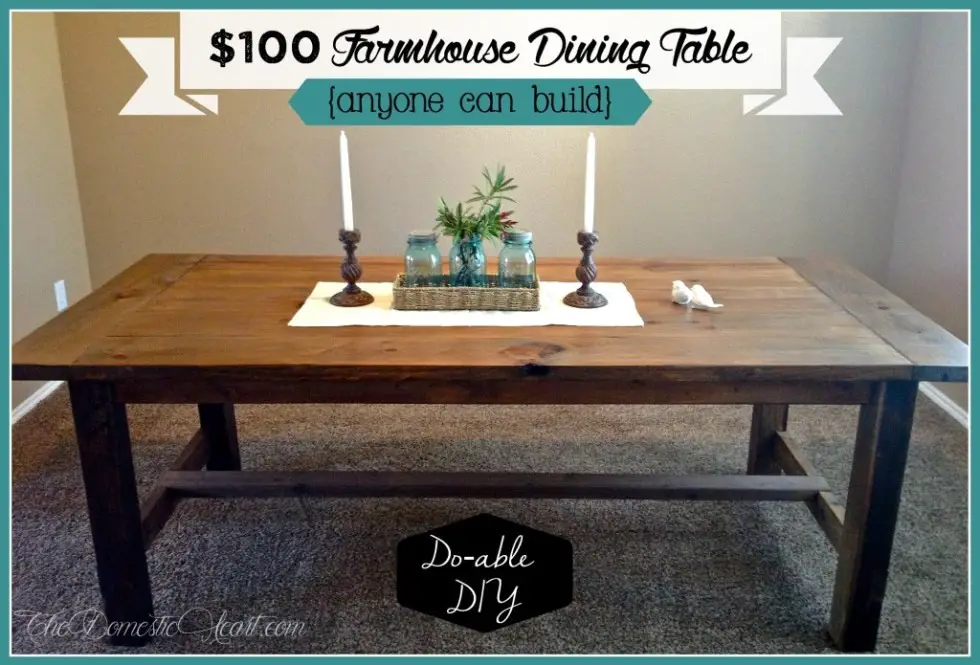
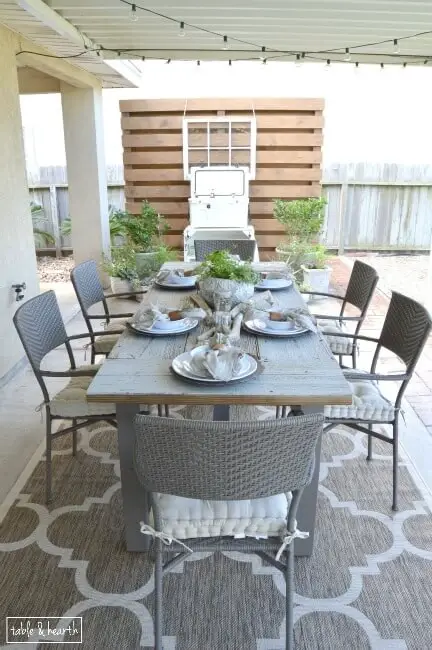
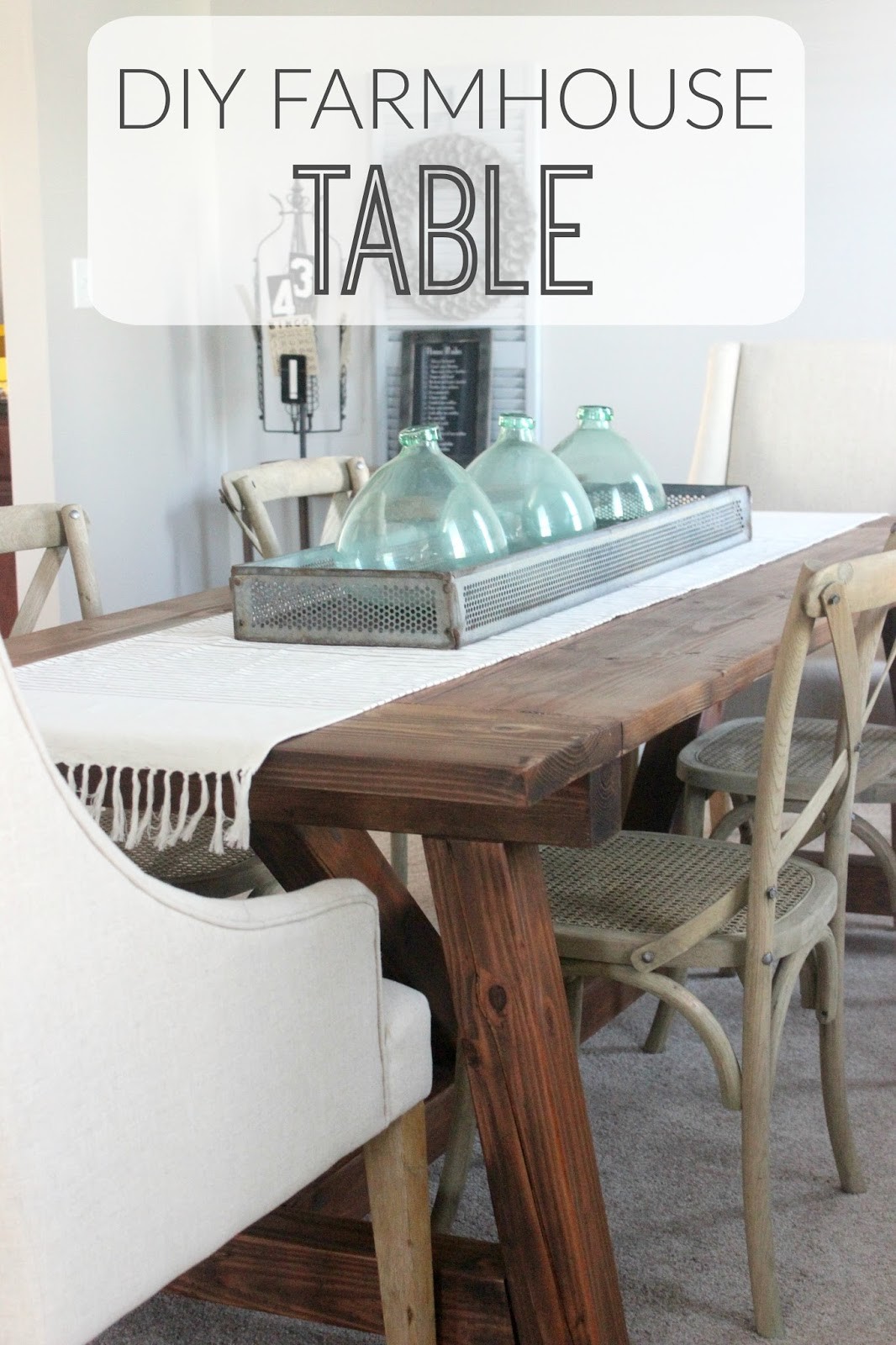


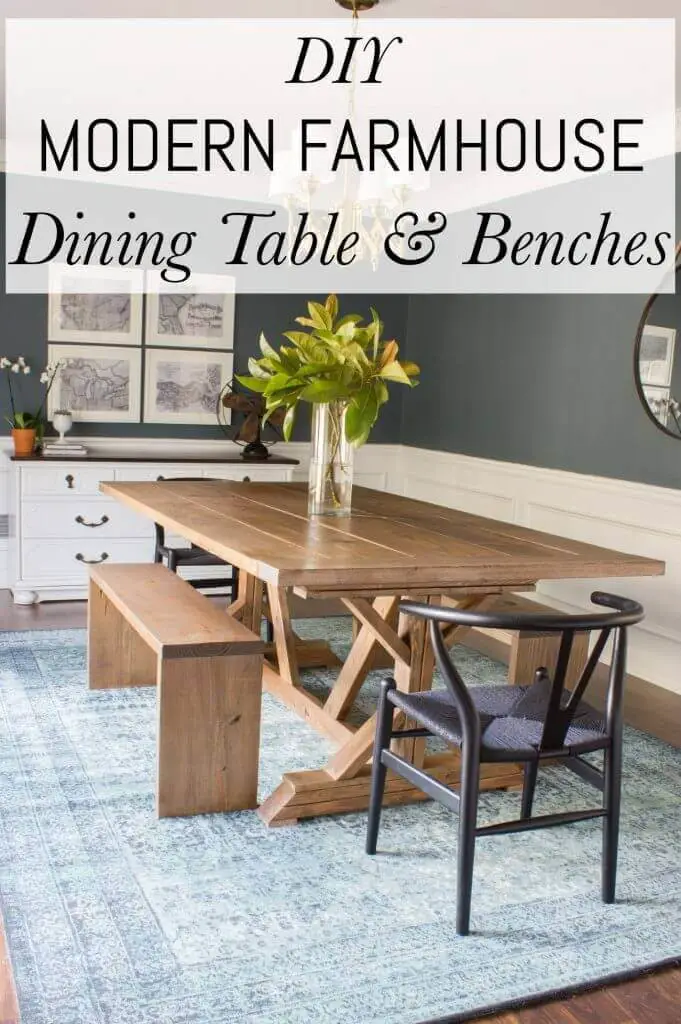
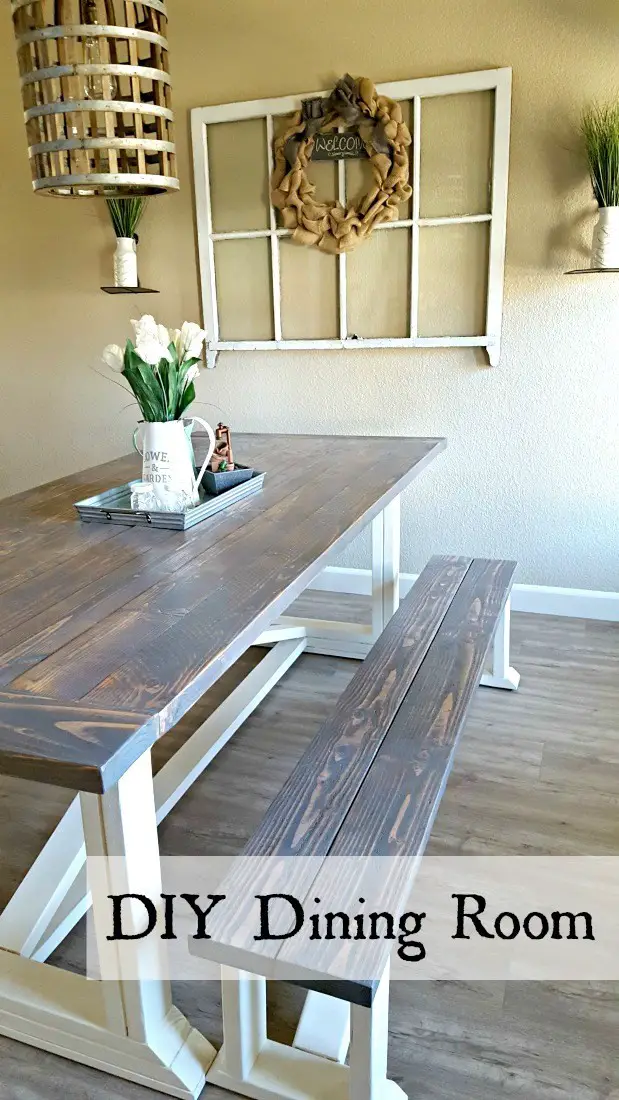

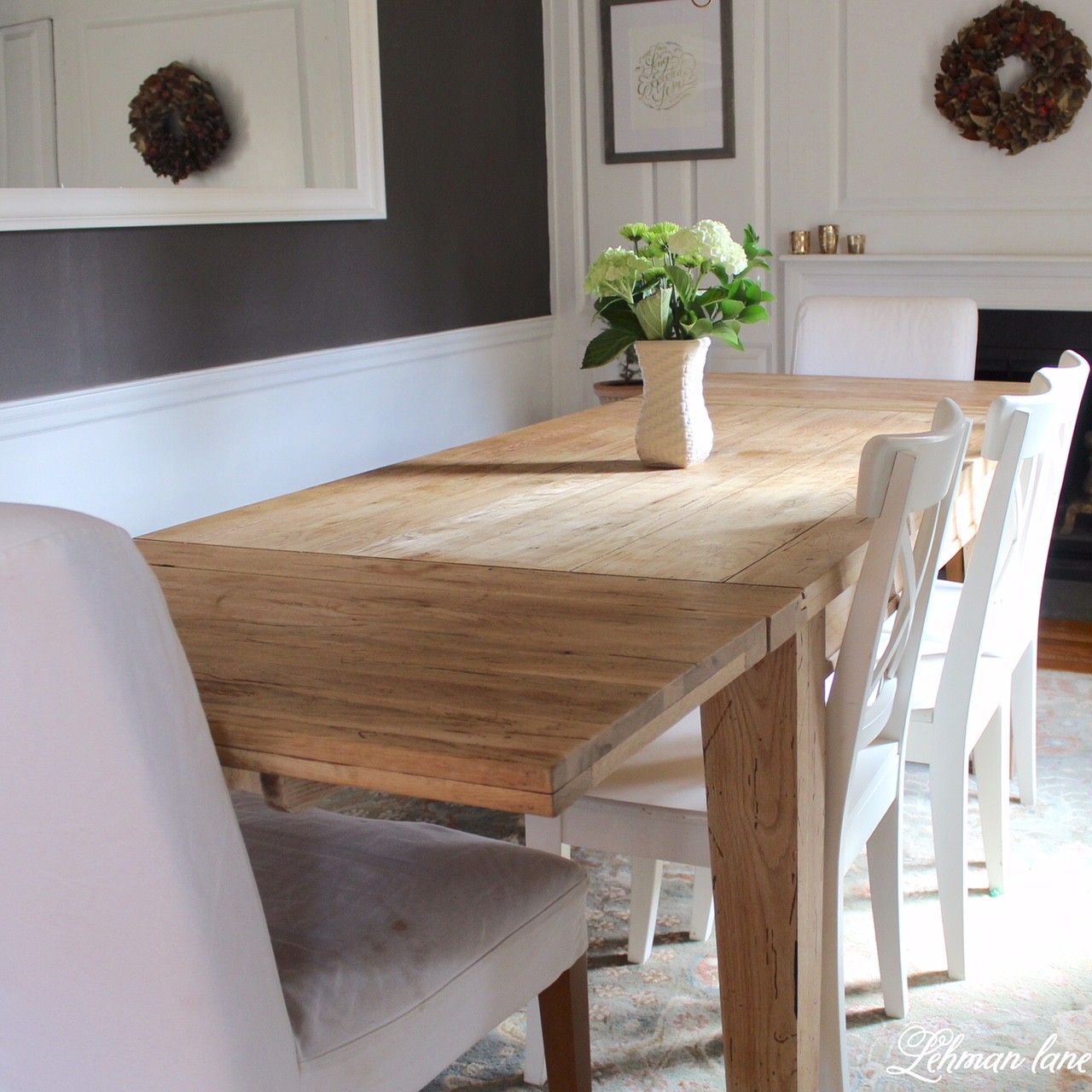
As I began my journey to discover the best blogs for home decor enthusiasts, I found myself scrolling through countless websites. From the beautifully curated spaces at Ana White and The Domestic Heart to the cozy nooks at Cherished Bliss and Lane Home Co, it was clear that these bloggers had a deep understanding of what makes a home truly special.
My search took me across the web, from popular platforms like Hometalk and Honey Bear Lane to lesser-known gems like Table and Hearth and Delightfully Noted Blog. I was struck by the diversity of styles and perspectives represented, from the modern simplicity of Boxy Colonial to the rustic charm of Erin’s Pain and Leap of Faith Crafting.
As I delved deeper into these blogs, I began to notice certain common threads – a commitment to authenticity, a love of storytelling, and a passion for sharing inspiration with others. Whether it’s Ana White’s iconic DIY tutorials or The Honeycomb Home’s stunning photography, each blog brings its unique voice and perspective to the table.
In the end, my search yielded a rich tapestry of home decor inspiration that I’m excited to share with you.
Care and Maintenance
Tips for Daily Care and Maintenance
To keep your rustic farmhouse table looking its best, you’ll want to prioritize regular care and maintenance. Start by incorporating daily dusting into your routine using a soft cloth that won’t scratch the wood surface. This simple yet effective approach can help extend the life of your table. For any spills or messes that may arise, be sure to clean them up promptly with a damp cloth followed by a dry one to prevent unsightly water marks from forming.
Additionally, consider placing coasters and placemats on your table to not only protect its surface from heat and moisture but also add an extra layer of style to your decor.
How to Protect the Table from Wear and Tear
To safeguard your table from wear and tear, you can employ two simple yet effective strategies. Firstly, consider covering your table with a tablecloth or runner during meal times to prevent direct contact between dishes, utensils, and the surface. This will not only shield against scratches but also protect against stains. Furthermore, applying a sealant or protective finish to your table can provide an added layer of protection against spills and heat damage.
It’s also crucial to conduct regular checks on any loose screws or wobbly legs to ensure the table remains stable and safe for use. By implementing these measures, you can enjoy a worry-free dining experience while keeping your table in excellent condition.
Refinishing and Restoring Older Tables
As your rustic farmhouse table accumulates stories and memories, it’s natural for it to show signs of wear over time. However, with some TLC and strategic refinishing, you can revive its original beauty and extend its lifespan. The process begins by giving the table a thorough cleaning and sanding down the surface to remove any existing finish. This prepares the wood for a new stain or paint that complements your dining space.
Once the new finish is applied, seal the table with a protective coat to safeguard it against future wear. By doing so, you’ll not only restore its aesthetic appeal but also ensure long-lasting durability. Caring for your rustic farmhouse table goes beyond mere maintenance; it’s about preserving a treasured piece of furniture that brings warmth and character to your home.
Through daily care, protection from wear and tear, and occasional refinishing or restoration, your table can remain a cherished centerpiece for gatherings and meals, embodying the timeless charm of farmhouse style.
Conclusion
Embracing the rustic farmhouse table lifestyle means more than just selecting a piece of furniture – it’s about cultivating a sense of warmth, tradition, and community. As you carefully consider size, materials, and styling, you’ll create a space that harmonizes with your home’s aesthetic while becoming a cherished hub for shared experiences.
Whether you’re drawn to the timeless charm of classic farmhouse tables, the blended appeal of modern rustic designs, or the satisfaction of a DIY project, there’s a table out there that resonates with your style and meets your needs. By following practical tips for care and maintenance, your farmhouse table can remain a beautiful and durable centerpiece in your home for years to come.
Allow the inspirations and real-life examples to guide you toward crafting a dining space that embodies the rustic farmhouse ethos – simple, inviting, and full of life.
FAQs about Rustic Farmhouse Table
What makes a table a ‘rustic farmhouse’ table?
In rustic farmhouse settings, the centerpiece is often a sturdy, handcrafted table with a natural wood finish that exudes warmth and character. Its unassuming design prioritizes practicality and simplicity, yet still manages to evoke a sense of timelessness through its weathered textures and robust silhouette. The result is a piece that perfectly balances traditional craftsmanship with a cozy, inviting ambiance.
Can I incorporate a rustic farmhouse table in a modern home?
A rustic farmhouse table can effortlessly blend into a modern space, serving as a show-stopping focal point that injects warmth and visual interest. By pairing it with sleek, contemporary chairs or a minimalist aesthetic, you can create a bold contrast that celebrates the unique qualities of each style. This harmonious fusion of old and new can result in a design that’s both timeless and timely, perfect for those seeking to strike a balance between traditional charm and modern sophistication.
How do I choose the right size farmhouse table for my space?
When planning your dining space, start by measuring out the area to ensure there’s sufficient room for effortless movement around the table. A minimum of 3 feet of clearance is recommended for a smooth and comfortable dining experience. Additionally, consider the number of regular guests you’ll be hosting and allocate approximately 24 inches of table space per person to guarantee a cozy and inviting atmosphere.
What are the best materials for a rustic farmhouse table?
When it comes to choosing the perfect material for your project, you’re spoiled for choice. From the rustic charm of reclaimed wood, which boasts a unique history and eco-friendly credentials, to the light-filled warmth of pine, ideal for casual spaces, and the durable, timeless elegance of oak – each option brings its own distinct character to the table.
How can I protect my rustic farmhouse table from damage?
To safeguard your coffee tables, use coasters and placemats strategically placed around cups and glasses to absorb heat and moisture. When it comes to maintenance, adopt a thorough approach by regularly dusting the surface with a soft cloth and swiftly cleaning any spills or messes that may arise. For an added layer of protection against stains, scratches, and everyday wear, consider applying a sealant or protective finish that can withstand daily use.
Can I DIY my own rustic farmhouse table?
With the right combination of basic tools, fundamental woodworking skills, and accessible online tutorials, crafting a one-of-a-kind farmhouse table can be an incredibly fulfilling DIY endeavor. By leveraging these resources, homeowners can create a bespoke piece that not only meets their spatial needs but also reflects their unique aesthetic preferences.
How do I style a rustic farmhouse table?
Blend diverse textures and elements to create a visually appealing atmosphere. Incorporate natural materials such as linen or cotton for tablecloths and runners, juxtaposing them with unique centerpieces crafted from vintage or handmade items to inject charm. Don’t be afraid to mix and match seating options like benches and chairs to add depth and visual interest.
How often should I refinish or restore my farmhouse table?
The decision to refinish a table hinges on two key factors: its condition and your personal aesthetic preferences. If the table displays visible signs of wear or damage that compromise its visual appeal or usability, it may be time for a rejuvenating refinish. Conversely, a well-maintained table typically requires only periodic refinishing, spaced several years apart to preserve its beauty and functionality.
Are rustic farmhouse tables expensive?
When it comes to pricing, the cost of a table can fluctuate significantly depending on factors such as materials used, size, and level of craftsmanship involved. On one hand, high-end, handmade tables can be a substantial investment for those seeking exceptional quality and uniqueness. On the other hand, there are plenty of affordable alternatives, including DIY projects that can cater to a range of budgets.
Where can I find inspiration for rustic farmhouse table designs?
When seeking inspiration for your dining space, turn to trusted sources like home decor magazines, the visual wonderland that is Pinterest, and interior design blogs. These platforms are treasure troves of ideas, showcasing real-life examples from renowned designers and everyday homeowners alike. By drawing on these practical insights and creative sparks, you’ll be well-equipped to bring your unique vision to life.


